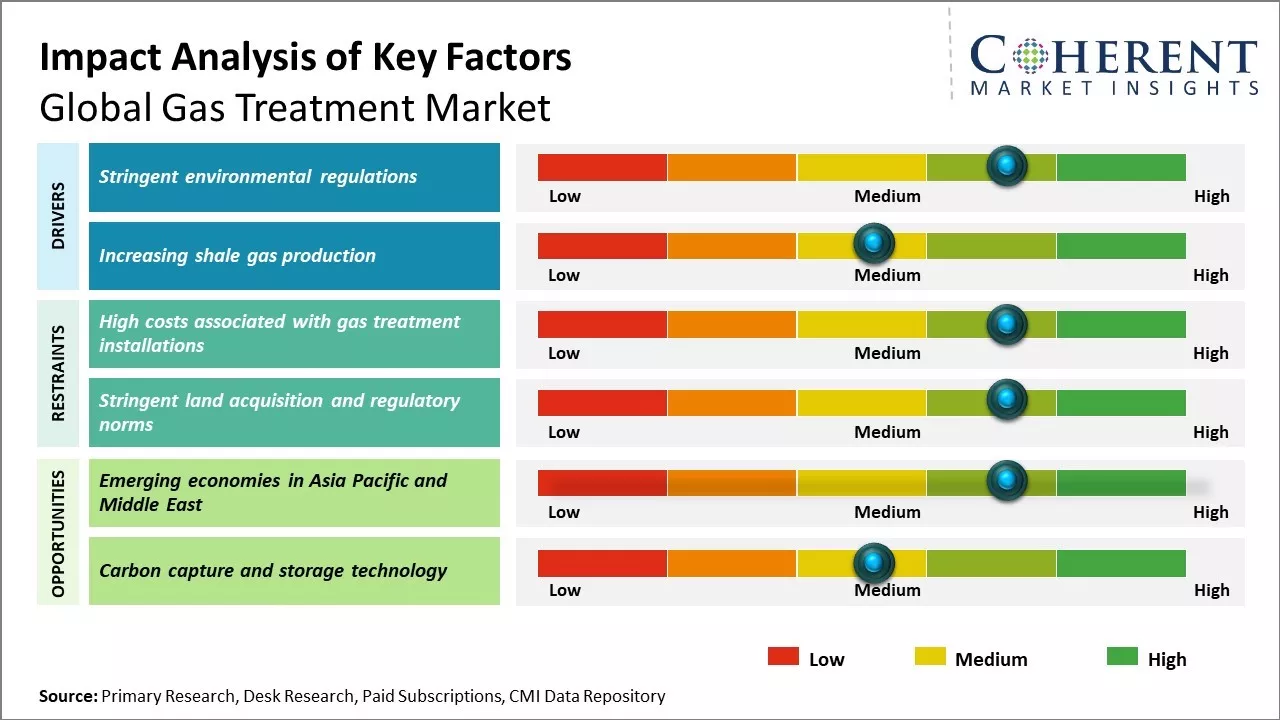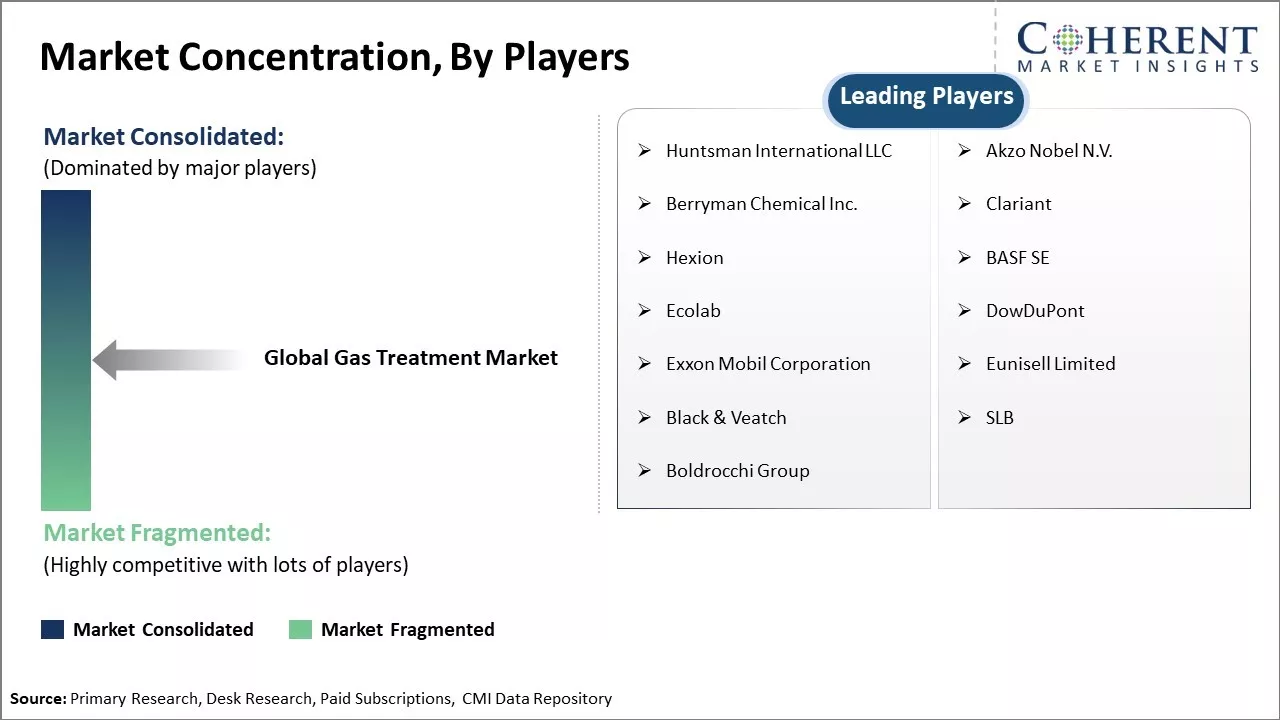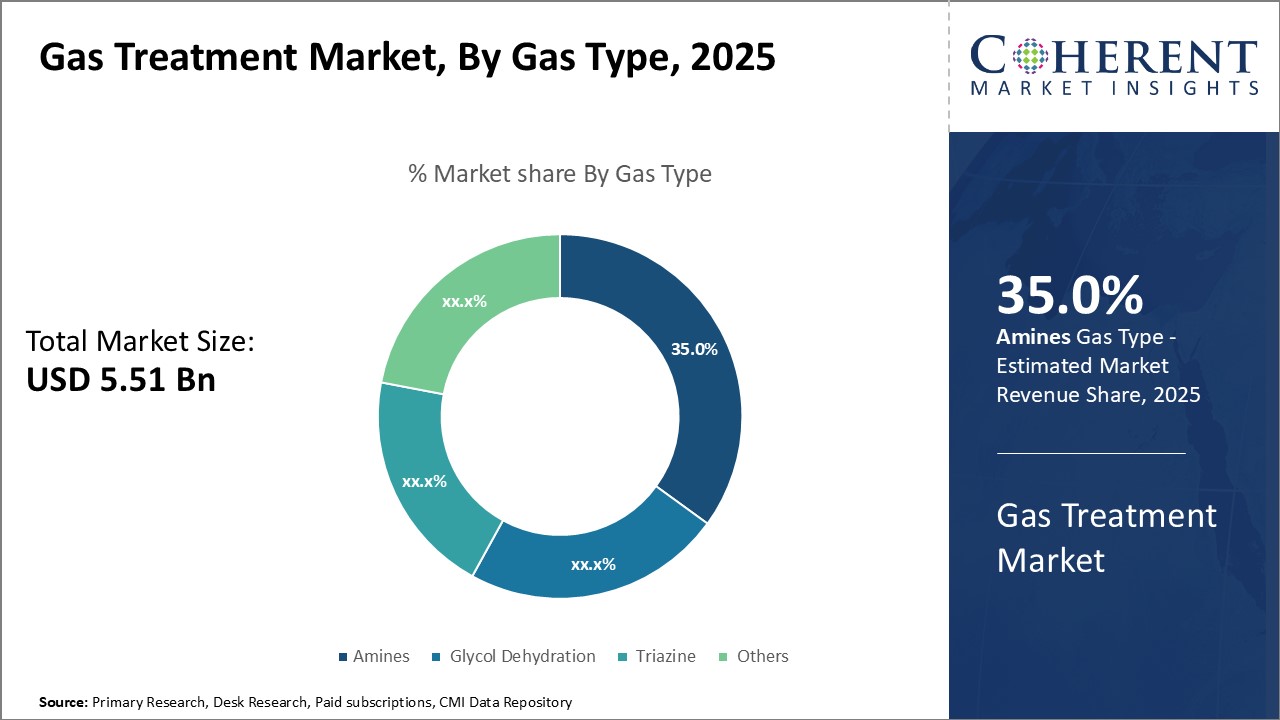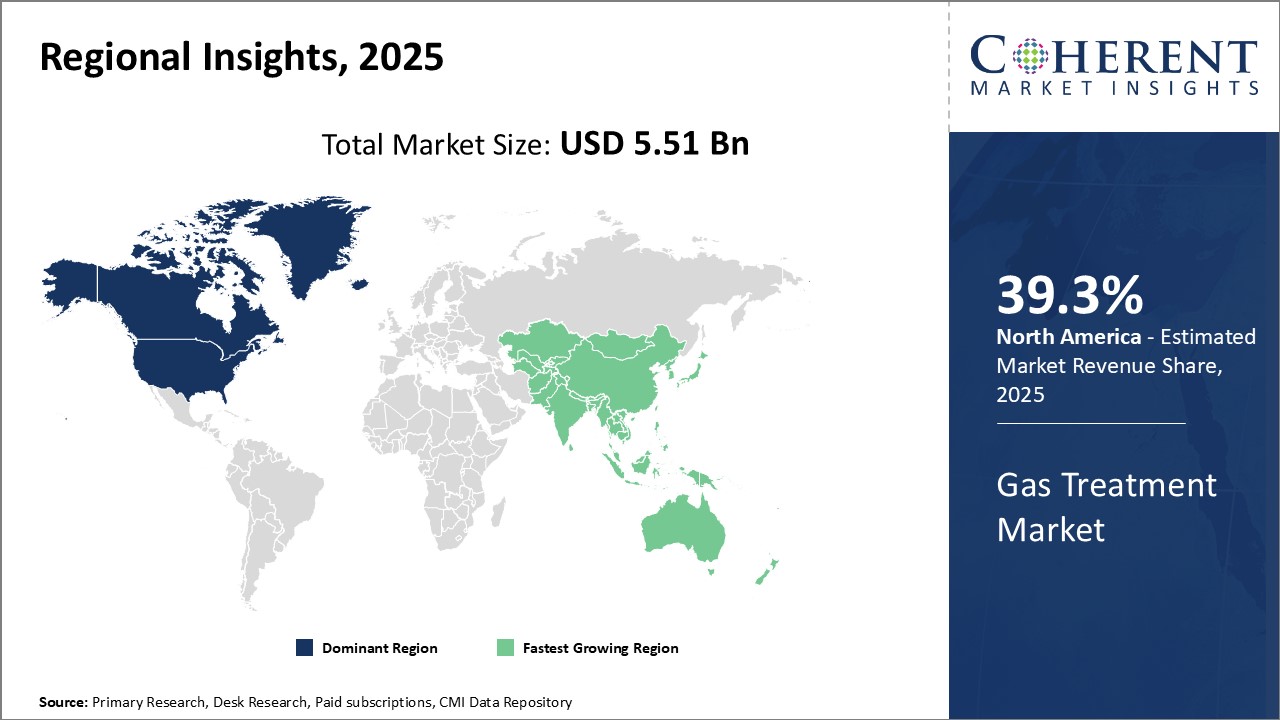Gas Treatment Market Size and Trends
The global gas treatment market is estimated to be valued at USD 5.51 Bn in 2025 and is expected to reach USD 8.19 Bn by 2032, exhibiting a compound annual growth rate (CAGR) of 5.8% from 2025 to 2032.

Discover market dynamics shaping the industry: Download Free Sample
The demand for gas treatment is expected to increase over the coming years due to rising energy needs and strict emission norms globally. Gas treatment helps improve gas quality, meets specification standards, and reduces emission levels from industrial facilities and power plants. Various technologies such as amines, molecular sieves, and hydrate inhibitors are being adopted to comply with regulations and optimize process performance. Key players are investing in R&D to develop more efficient and economical treatment solutions to expand in high growth markets. New gas fields development as well as rising LNG trade will further drive the need for effective gas purification systems and boost volume sales of gas treatment products until 2031.
Stringent environmental regulations
With growing concerns over the environmental impact of industrial operations, regulatory bodies across the world have instituted increasingly stringent standards to curb harmful emissions. Industries that involve the use of natural gas require specialized treatment of the raw fuel stream to remove impurities before it can be safely utilized within processing facilities or distributed via transmission pipelines. The gas treatment market has seen steady growth as regulatory compliance has become imperative to continued operations.
Countries and regions at the forefront of the push for lower carbon footprints have introduced resource-protective legislations. This has made the installation of gas treatment systems compulsory for major industrial verticals. Strict environmental norms around the release of toxic substances such as sulfur, mercury, and carbon into the atmosphere are driving the need for sophisticated absorption, adsorption and membrane separation equipment. Gas treatment helps achieve the emission reductions mandated by authorities, allowing businesses across energy, petrochemicals and manufacturing to adhere to legal stipulations. With non-compliance inviting heavy penalties, companies are proactively retrofitting their pipeline infrastructure and optimizing existing plants to meet updated emissions standards.
As the policy push for cleaner energy gather pace globally, more stringent environmental rules governing natural gas processing can be expected to be enforced in the coming years. Moreover, tighter restrictions would translate into higher investment in technology and equipment upgrades needed to scrub impurities from gas streams before end-use or transmission. This growing regulatory pressure is a key factor supporting the continued market opportunity for gas treatment system providers. Their solutions enable compliant operations across major gas-consuming sectors by aiding the removal of regulated substances from the fuel stream.
Market Concentration and Competitive Landscape

Get actionable strategies to beat competition: Download Free Sample
Increasing shale gas production
The widespread success of unconventional extraction techniques such as hydraulic fracturing has lifted natural gas output to unprecedented levels in recent times. Especially in North America, booming shale reserves have boosted domestic gas production and transformed international energy trade dynamics. This shale gas revolution has delivered largely positive outcomes but thrown up new challenges. Unrefined shale gas streams often contain a more complex mix of hydrocarbon compounds and traces of formation water compared to conventional reserves. Effective treatment is required to condition the raw gas for transportation and usage without compromising pipeline integrity or combustion quality standards.
As prolific shale formations such as the Marcellus and Permian basins sustain high levels of drilling activity, the volumes of associated gas production destined for commercial and industrial consumers continue to swell.
Key Takeaways from Analyst:
Rising demand for natural gas across various industries along with stringent emission norms will drive increased spending on technologies to remove impurities from gas streams. North America and Europe currently dominate due to widespread adoption in oil & gas facilities. However, developing markets in Asia Pacific are expected to show the highest growth.
Pricing pressures due to volatile raw material costs can hamper profitability margins for manufacturers. Significant capital requirements for setting up large-scale gas treatment units also pose a challenge. Competition from cheaper sourcing alternatives like activated carbon may restraint market potential. Strict infrastructure needs for hazardous waste disposal is another factor that needs consideration.
The growth outlook for the gas treatment market is positive driven by spending on downstream oil & gas projects and stringent environmental regulations. Integrated solutions tailored for specific end-use applications and industries will help companies gain a foothold.
Market Challenges: Stringent land acquisition and regulatory norms
Strict land acquisition and regulatory norms are posing significant challenges for the growth of the global gas treatment market. Obtaining lands for setting up new gas treatment facilities has become an extensive process due to rigid land laws in many countries. Major energy companies often struggle to get the necessary approvals and permissions to procure lands within defined timelines set by their project schedules. Lengthy negotiations, litigation issues, and lack of social consensus are some of the key reasons quoted for delayed land acquisition over the past 5 years according to World Bank data.
Market Opportunities: Emerging economies in Asia Pacific and Middle East
The emerging economies in Asia Pacific and Middle East regions provide huge growth opportunities for the global gas treatment market. These regions are witnessing rapid industrialization and infrastructure development which has significantly increased the energy demands. Various countries in these regions like China, India, Saudi Arabia and UAE are heavily investing in setting up new power plants, manufacturing facilities, transportation sectors and building commercial complexes which require large volumes of treated natural gas and refined petroleum products on a daily basis.

Discover high revenue pocket segments and roadmap to it: Download Free Sample
Insights by gas type : Amines: The Dominant Gas Type Segment Due to Versatile Removal of Acid Gases
By Gas type, the Amines segment is estimated to hold 35.0% share of the gas treatment market in 2025, due to their versatile ability to remove acid gases like hydrogen sulfide and carbon dioxide. Amine gas treating uses chemical solvents to react with and absorb acid gases from natural gas and other process streams. Commonly used amines include monoethanolamine (MEA), diethanolamine (DEA), and methyldiethanolamine (MDEA).
Amines are highly effective at removing both H2S and CO2, allowing them to be used across a wide range of gas streams with varying acid gas compositions. This makes amines the optimal choice for many upstream and midstream natural gas applications where the exact gas composition may not be known in advance. Their absorption characteristics can also be tailored through the use of different amine blends and process configurations. The chemical absorbing process with amines provides greater efficiencies and capacities than physical solvents for high acid gas loadings. This allows amines to treat larger gas volumes and enables higher recoveries from gas wells with heavier contaminant levels. Producers prefer amines for strippers and multi-stage treating to maximize acid gas removal from lean gas. Another key factor driving amine use is their thermal stability. Amines can tolerate higher temperatures than other solvents without degradation, corrosion, or solids precipitation issues. This thermal robustness suits amines for treating hot, high-pressure gas streams from certain reservoirs without expensive cooling requirements. Amines also regenerate acid gases at lower temperatures.
Insights by application : Acid Gas Removal: The Dominant Application Segment
By application, the acid gas removal segment is estimated to account for 32.8% share of the gas treatment market in 2025. The ubiquitous presence of hydrogen sulfide (H2S) and carbon dioxide (CO2) in natural gas reserves worldwide necessitates their separation prior to further gas processing or pipeline transmission. Left untreated, these corrosive acid gases can damage equipment, contaminate product streams, and jeopardize safety.
Nearly all greenfield and brownfield natural gas projects require some level of H2S and CO2 removal during raw gas sweetening. Field gathering, natural gas processing facilities, LNG liquefaction, refined gas production, and pipeline transport all rely heavily on effective acid gas separation. Proper treatment is indispensable for monetizing sour gas reserves and delivering pipeline-quality dry natural gas. As the first and most critical stage of gas conditioning, acid gas removal sets the baseline quality parameters to enable downstream processes like dehydration, NGL recovery, and specifications tuning. Even seemingly "sweet" reservoirs may still benefit from front-end acid gas treating to avoid contaminating commercial-grade streams. Multiple treatment steps on multi-phase or high-sulfur feeds are typical. Membrane, amine, and non-regenerative solutions like zinc oxide and iron sponge represent popular acid gas removal methods. However, the highly regenerable amine process is most scalable and lends itself to maximum contaminant recovery over plant lifetime. Amines also treat the broadest range of gas compositions, from dry to rich sour gas. These advantages contribute to amines' primacy in acid gas removal as the cornerstone segment.
Regional Insights

Need a Different Region or Segment? Download Free Sample
North America has established itself as the dominant regional market for gas treatment and is estimated to account for 39.3% share in 2025. The large scale shale gas exploration drives in the U.S. have led to substantial natural gas production over the past decade. With abundant natural gas reserves, the U.S. is now one of the largest exporters of natural gas in the form of LNG. This growing natural gas supply has spurred heavy investments in midstream infrastructure for transport, processing, and treatment of the produced gases. Major oil and gas companies have set up sizable gas processing units in major shale basins to remove impurities and bring the gas up to sales specification. The presence of leading global players has also made North America a hub for the development of advanced gas treatment technologies.
The Asia Pacific region is poised to become the fastest growing market in the coming years. Rapid economic growth and industrialization are driving the energy demand exponentially in countries like China and India. While coal still remains a major fuel, both countries are taking decisive policy pushes for increasing the share of natural gas in their energy mix. This is evident from growing LNG import infrastructure as well as domestic gas pipeline projects. Additionally, there is a large refining and petrochemical industry presence which subjects the produced refinery gases and feedstocks to extensive treatment. Local technology players are collaborating with global majors to build local manufacturing capacities. Countries like Indonesia, Malaysia, and Australia are also ramping up their exported LNG volumes. The outlook for gas treatment demand looks very promising across the Asia Pacific as the supply side infrastructure develops in tandem with rising energy consumption.
Market Report Scope
Gas Treatment Market Report Coverage
| Report Coverage | Details | ||
|---|---|---|---|
| Base Year: | 2024 | Market Size in 2025: | USD 5.51 Bn |
| Historical Data for: | 2020 To 2024 | Forecast Period: | 2025 To 2032 |
| Forecast Period 2025 to 2032 CAGR: | 5.8% | 2032 Value Projection: | USD 8.19 Bn |
| Geographies covered: |
|
||
| Segments covered: |
|
||
| Companies covered: |
Huntsman International LLC, Akzo Nobel N.V., Berryman Chemical Inc., Clariant, Hexion, BASF SE, Ecolab, DowDuPont, Exxon Mobil Corporation, Eunisell Limited, Black & Veatch, SLB, and Boldrocchi Group |
||
| Growth Drivers: |
|
||
| Restraints & Challenges: |
|
||
Uncover macros and micros vetted on 75+ parameters: Get instant access to report
Market Segmentation
- Gas Type Insights (Revenue, USD Bn, 2020 - 2032)
- Amines
- Glycol Dehydration
- Triazine
- Others
- Application Insights (Revenue, USD Bn, 2020 - 2032)
- Acid gas removal
- Dehydration
- Others
- Regional Insights (Revenue, USD Bn, 2020 - 2032)
- North America
- U.S.
- Canada
- Latin America
- Brazil
- Argentina
- Mexico
- Rest of Latin America
- Europe
- Germany
- U.K.
- Spain
- France
- Italy
- Russia
- Rest of Europe
- Asia Pacific
- China
- India
- Japan
- Australia
- South Korea
- ASEAN
- Rest of Asia Pacific
- Middle East & Africa
- GCC Countries
- Israel
- Rest of Middle East & Africa
- North America
- Key Players Insights
- Huntsman International LLC
- Akzo Nobel N.V.
- Berryman Chemical Inc.
- Clariant
- Hexion
- BASF SE
- Ecolab
- DowDuPont
- Exxon Mobil Corporation
- Eunisell Limited
- Black & Veatch
- SLB
- Boldrocchi Group
Share
Share
Missing comfort of reading report in your local language? Find your preferred language :
Transform your Strategy with Exclusive Trending Reports :
Frequently Asked Questions
EXISTING CLIENTELE
Joining thousands of companies around the world committed to making the Excellent Business Solutions.
View All Our Clients
